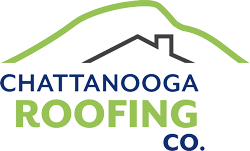The Advantages of a Shingle Roof
Shingles are a durable, long-lasting option for roofs. They protect your home from rain, sun, and snow and add a distinctive aesthetic to your property.
The shingle industry has seen a proliferation of colors and styles in recent years. The options are almost limitless for homeowners, allowing them to create the look that suits their homes. Read on to find out more.
1. Durability
The durability of a shingle roof is one of the most significant factors in its lifespan. The average 3-tab asphalt shingle lasts 20 years, while architectural shingles can easily exceed 30.
Many things can affect a shingle roof’s lifespan, including the quality of installation and routine inspections and maintenance. A roofing company should provide a detailed roof report that includes inspections of the attic space, gutters and downspouts, visible shingle damage or wear, mold, moss, and algae.
Another factor is the climate of your home. Extreme heat, humidity, and rain can shorten the lifespan of your shingle roof significantly. For instance, Florida’s high humidity can increase the growth of mold and moss which can cause shingle damage and reduce the shingle’s lifespan. These issues can be avoided with routine roof maintenance and repairs. Your shingles can also be protected by a good attic ventilation system. This will prevent excessive heat from building up in the attic, which can reduce shingle lifespans.
2. Aesthetics
A shingle roof can add to the overall look of your home, and many styles of shingles are available. Black shingles in particular can highlight the architectural details of your home and help it stand out from the rest of the neighborhood.
While shingle roofs are typically less expensive than metal roofs, they also have shorter lifespans and will need to be replaced more frequently. They are also heavier than metal roofs and can place extra stress on the house’s foundation over time.
When choosing the color for your shingle roof, make sure to consider how it will complement your brick and stone accent areas, such as siding, soffit, fascia, doors, and shutters. Avoid choosing a color that closely matches your brick or stone, as this may cause the entire look of your home to become too monotone. Alternatively, a bright or rich shingle hue can provide the pop and curb appeal that your home needs.
3. Easy Maintenance
As a roofing material, shingles are considered easier to install and maintain than tile or metal roofs. This is because shingle roofs are relatively lightweight, making them easy for a roofing team to handle and transport. They also require less maintenance from homeowners, who only need to remove debris and routinely inspect the roof for signs of damage or deterioration.
If a homeowner wishes to install a shingle roof themselves, they will need to carefully follow manufacturer instructions and local building codes. They should also prepare the surface by installing underlayment, drip edge, and flashing as needed. Then, they should shingle the roof starting at the bottom with the first course of shingles. This first row, sometimes called a starter course or strip, should have a self-sealing adhesive on each tab.
Homeowners should also be sure to properly shingle around any plumbing vent pipes and roof valleys. This will help keep moisture from penetrating the structure of the house and prevent leaks.
4. Installation
Shingles are a complex home improvement project, and shoddy installation can result in leaks and voided warranties. If you decide to take on this project yourself, make sure you have all the necessary tools and materials. Choosing a day with clear weather is critical to success, as working on the roof in hot sun or biting winter winds can be dangerous.
Calculate the area of each roof section in square feet to determine how much shingle and underlayment material you need. Then, divide the area by the number of shingles per package to find out how many packages you need. Before you begin the shingle installation, map out the pattern using chalk lines. Start at the eave and install starter strips along rake edges to provide sealant adhesion points and enhance the roof’s wind resistance. Also, be mindful to nail shingle courses correctly – shingle exposure and offset (the lateral distance between joints in successive rows) should be correct. Next blog post.

